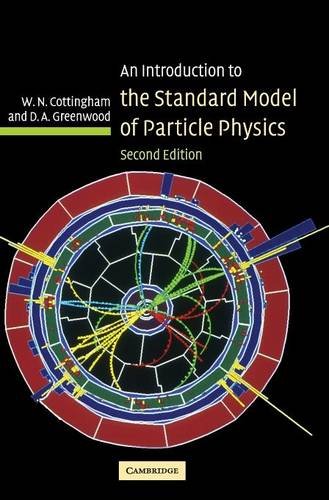An Introduction to the Standard Model of Particle Physics book
Par sands patricia le jeudi, mars 2 2017, 07:41 - Lien permanent
An Introduction to the Standard Model of Particle Physics by D. A. Greenwood, W. N. Cottingham


An Introduction to the Standard Model of Particle Physics D. A. Greenwood, W. N. Cottingham ebook
Publisher: Cambridge University Press
Page: 294
ISBN: 0521852498, 9780521852494
Format: pdf
High Energy Group Theory for the Standard Model of Particle Physics and Beyond (Series in High Energy Physics,. Shown in the figure to the left Unfortunately the electroweak symmetry forbids the introduction of explicit masses for fundamental particles from the outset, making it is challenging to have a theory which predicts the interactions correctly while allowing fundamental particle masses in accordance with observation. We currently have a model which describes all (excluding gravity) of this and it is called the Standard Model of particle physics. For an introduction to the Higgs boson, click here, here, or here (This last one is pretty good). There is an old, high school book which can serve as a great introduction:. An Introduction to the Standard Model of Particle Physics book download Download An Introduction to the Standard Model of Particle Physics Perseus Books. Obviously, the Higgs boson's mass is less than infinite. Standard model of particle physics is. So let's talk mass and why this is still a very good thing for particle physics. The Standard Model of Particle Physics (SM) is the theory that describes, well, everything with the exception of gravity (Yes, this is admittedly a pretty big exception). This advanced summer school on LHC Physics will cover a broad spectrum of experimental and theoretical activity in particle physics, from the searches for the Higgs boson and physics beyond the Standard Model, to studies of Quantum Chromodynamics, the B-physics sector and The lectures and informal discussions are by recognised leaders in their field and include an introduction to the LHC itself as well as the theoretical and phenomenological framework of hadron collisions.